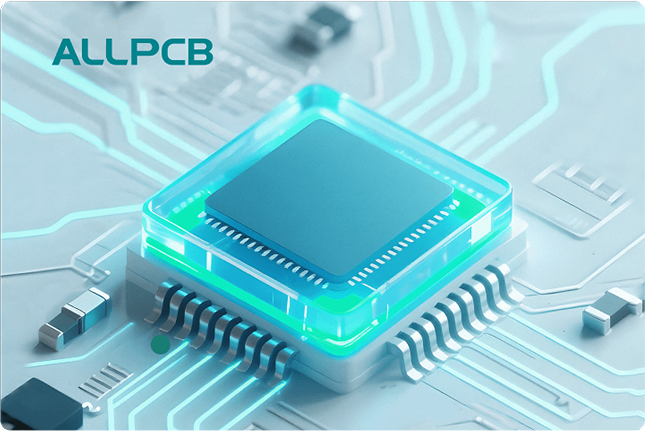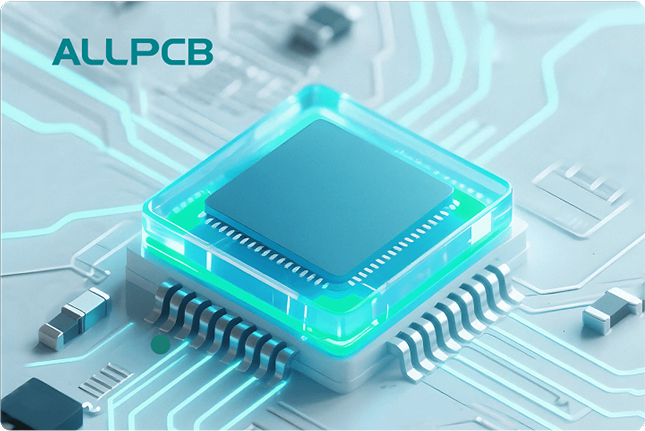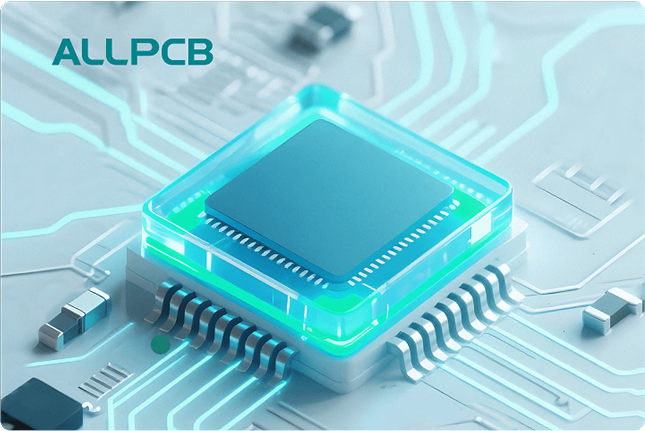Are you ready to create a stunning piece of LED art by assembling your own light-up PCB prototype? Whether you're a beginner or a seasoned hobbyist, crafting a DIY LED project like this is an exciting way to blend creativity with electronics. In this guide, we'll walk you through the entire process of designing, assembling, and soldering LED circuits to bring your LED art PCB to life. From selecting components to creating light-up prototypes, we've got you covered with step-by-step instructions tailored for success.
Let’s dive into the world of DIY LED art and help you build a project that not only looks amazing but also teaches you valuable skills in assembling LED circuits and soldering LEDs. This blog post will provide everything you need to get started, ensuring your first light-up PCB prototype is a glowing achievement.
What Is LED Art and Why Build a Light-Up PCB Prototype?
LED art is a creative form of expression that uses light-emitting diodes (LEDs) to design visually captivating displays. By integrating LEDs into a printed circuit board (PCB), you can craft custom patterns, shapes, or even animated effects for decorations, signage, or personal projects. Building a light-up PCB prototype allows you to test your design ideas, learn the basics of electronics, and create something truly unique.
A light-up PCB prototype serves as the foundation for your DIY LED project. It’s a custom board where you’ll mount LEDs, resistors, and other components to control how the lights behave. This process involves designing the circuit, soldering LEDs, and sometimes programming microcontrollers for dynamic effects. Not only is this a fun way to explore electronics, but it also opens doors to more complex projects in the future.
Tools and Materials for Your DIY LED Project
Before you start assembling LED circuits, gather the necessary tools and materials. Having everything ready will make the process smoother and more enjoyable. Here’s a detailed list of what you’ll need for creating light-up prototypes:
- LEDs: Choose LEDs based on color, size (like 3mm or 5mm), and brightness. For a small project, 10-20 LEDs are usually enough.
- Resistors: These limit the current to protect your LEDs. A common value for a 5V circuit with standard LEDs is 220 ohms, but calculate based on your LED’s forward voltage (often 2-3V) using Ohm’s Law: R = (Supply Voltage - LED Voltage) / LED Current.
- PCB: Opt for a custom-designed board or a perforated protoboard for prototyping. Ensure it’s large enough for your LED layout.
- Soldering Iron and Solder: A 25-40W soldering iron with a fine tip works best for small components like LEDs.
- Wire and Connectors: Use jumper wires or thin gauge wire (22-24 AWG) to connect components if needed.
- Power Source: A 5V USB power supply or a 9V battery with a voltage regulator can power your circuit safely.
- Basic Tools: Wire cutters, tweezers, a multimeter for testing, and a helping hand tool for holding components.
- Design Software: Use free or open-source tools to design your PCB layout if you’re creating a custom board.
- Optional Microcontroller: For advanced effects in your LED art PCB, consider a small microcontroller to program animations.
Step 1: Planning Your LED Art Design
The first step in any DIY LED project is planning. Decide on the pattern or image you want your LEDs to form. This could be a simple shape like a heart or star, or something more intricate like a miniature skyline. Sketch your design on paper or use design software to map out where each LED will go on your PCB.
Consider the following while planning:
- LED Placement: Space LEDs evenly for a balanced look. For a 4x4 grid, place LEDs about 1-2 cm apart to avoid overcrowding.
- Power Requirements: Calculate the total current draw. If each LED draws 20mA and you’re using 16 LEDs, you’ll need a power source supporting at least 320mA.
- Circuit Type: Decide if LEDs will be in series (one after another, requiring higher voltage) or parallel (side by side, requiring more current).
Once your design is ready, create a schematic that shows how components connect. This blueprint will guide you when assembling LED circuits on your PCB.
Step 2: Designing Your LED Art PCB
If you’re using a custom PCB for your light-up prototype, design the board layout using PCB design software. Start by placing pads for LEDs and resistors, then draw traces to connect them to a power source. Ensure traces are wide enough (at least 0.5mm for low-current designs) to handle the current without overheating.
For beginners, a single-layer PCB design is easiest. Keep these tips in mind:
- Place LEDs with correct polarity—longer leg (anode) to positive, shorter leg (cathode) to negative through a resistor.
- Add mounting holes if you plan to hang or frame your LED art.
- Double-check your design for errors before sending it for fabrication or etching it at home.
If custom PCB design feels overwhelming, use a perforated protoboard and manually wire the components. It’s less polished but great for learning.
Step 3: Assembling LED Circuits on Your PCB
With your PCB ready, it’s time to start assembling LED circuits. Follow these steps to ensure a clean and functional build:
- Prepare Components: Sort your LEDs and resistors. Bend LED legs at a 90-degree angle if using through-hole components for easier insertion.
- Insert Components: Place LEDs and resistors into their designated spots on the PCB. Match polarity for LEDs—anode to positive trace, cathode to resistor.
- Secure Placement: Bend the legs slightly on the underside to hold components in place before soldering.
- Double-Check: Verify all components are correctly placed and oriented before moving to soldering.
This stage is critical for creating light-up prototypes that work as intended. Take your time to avoid mistakes like reversed polarity, which can prevent LEDs from lighting up.
Step 4: Soldering LEDs and Components
Soldering LEDs is a delicate process, but with practice, it becomes second nature. Here’s how to do it safely and effectively:
- Heat the Soldering Iron: Set your iron to around 300°C (572°F) for through-hole components. Let it warm up for a few minutes.
- Tin the Tip: Apply a thin layer of solder to the iron tip to improve heat transfer.
- Solder Joints: Place the iron tip on the PCB pad and component leg for 1-2 seconds, then feed solder into the joint until it flows smoothly. Avoid overheating—LEDs can be damaged by excessive heat (over 5 seconds per joint).
- Trim Excess: After cooling, use wire cutters to trim excess legs close to the solder joint.
- Inspect: Look for shiny, cone-shaped solder joints. Dull or cracked joints indicate a cold solder connection, which may fail.
Soldering LEDs requires patience. If a joint looks off, reheat and add fresh solder. Practice on scrap material if you’re new to this skill.
Step 5: Testing Your Light-Up PCB Prototype
Before calling your project complete, test your light-up PCB prototype to ensure everything works. Connect your power source (like a 5V USB adapter) to the board’s power terminals. Observe the following:
- Do all LEDs light up? If not, check for loose solder joints or reversed polarity.
- Are the brightness levels consistent? Uneven brightness may indicate a wrong resistor value or voltage drop.
- Use a multimeter to measure voltage across each LED (should be around 2-3V for standard LEDs) and current draw to confirm it’s within safe limits.
If something doesn’t work, troubleshoot systematically. Start from the power source and trace connections to find breaks or errors. Fixing issues now prevents frustration later.
Step 6: Adding Finishing Touches to Your LED Art
Once your PCB prototype lights up as planned, add finishing touches to enhance its appeal. Consider these ideas:
- Enclosure: Mount your PCB in a frame or acrylic case to protect it and improve aesthetics.
- Diffusion: Place a frosted plastic sheet over LEDs to soften the light for a professional look.
- Programming: If using a microcontroller, upload code to create blinking, fading, or chasing effects.
These extras transform your DIY LED project from a functional circuit into a piece of art you can proudly display.
Tips for Success in Assembling LED Circuits
Creating light-up prototypes can have challenges, especially for beginners. Here are some tips to help you succeed:
- Start small with 5-10 LEDs to master soldering and circuit basics before scaling up.
- Always wear safety glasses when soldering to protect your eyes from stray solder bits.
- Work in a well-ventilated area to avoid inhaling solder fumes.
- Keep a fire extinguisher nearby in case of accidents with hot tools.
- Document your process—take notes or photos of each step to learn from mistakes or replicate successes.
Common Mistakes to Avoid in DIY LED Projects
Even with careful planning, errors can happen when assembling LED circuits. Watch out for these common pitfalls:
- Wrong Polarity: LEDs won’t light if installed backward. Always check anode and cathode orientation.
- Overheating LEDs: Limit soldering time to prevent damaging sensitive components.
- Incorrect Resistor Values: Too low resistance can burn out LEDs; too high dims them. Calculate properly using Ohm’s Law.
- Poor Connections: Loose wires or bad solder joints cause intermittent or no lighting. Inspect every connection.
Expanding Your Skills: Next Steps After Your First LED Art PCB
After completing your first light-up PCB prototype, you’ve gained skills in designing, assembling, and soldering LEDs. Build on this foundation by exploring more complex DIY LED projects, such as:
- Creating animated LED displays with microcontrollers for dynamic effects.
- Designing multi-layer PCBs for intricate patterns with hundreds of LEDs.
- Experimenting with RGB LEDs to add color-changing capabilities to your art.
Each project will improve your understanding of electronics and inspire new ideas for LED art creations.
Conclusion: Light Up Your Creativity with DIY LED Art
Building your first LED art PCB is a rewarding journey that combines technical skills with artistic vision. By assembling LED circuits, soldering LEDs, and creating light-up prototypes, you’ve taken a significant step into the world of DIY electronics. With the right tools, a thoughtful design, and careful execution, your LED art can become a centerpiece of creativity and innovation.
Start small, learn from each step, and don’t be afraid to experiment. The process of crafting a DIY LED project is as illuminating as the final glowing result. So, grab your soldering iron, sketch out your next idea, and let your light-up PCB prototype shine bright!
 ALLPCB
ALLPCB







